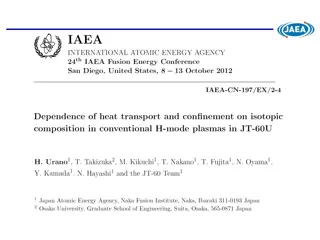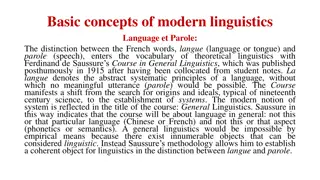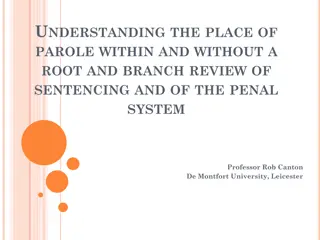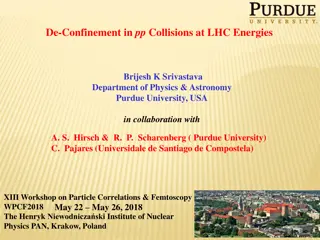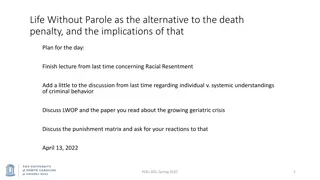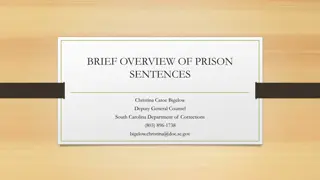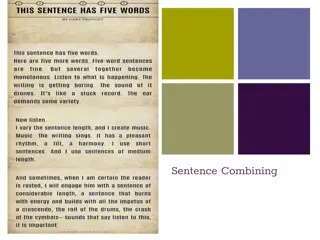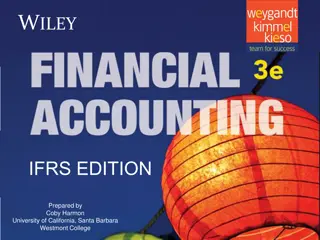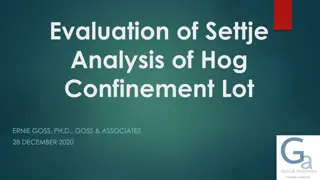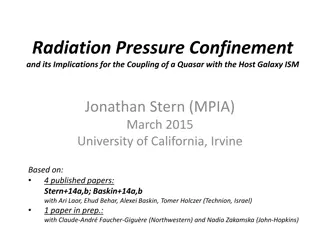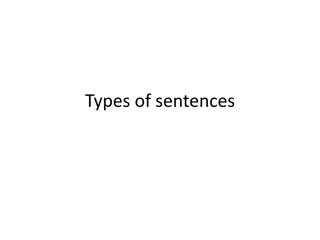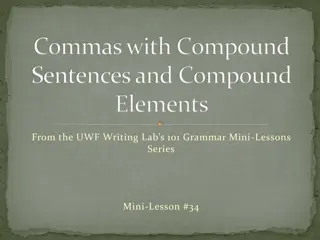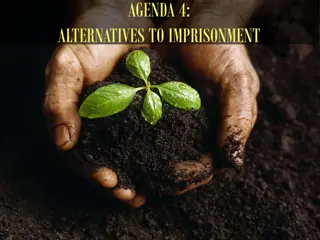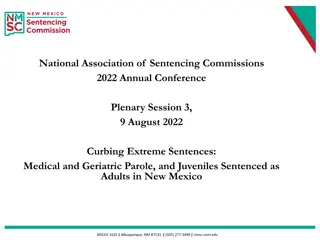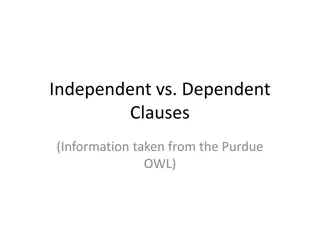Evolution of Life Sentences: From Parole to Perpetual Confinement
The shift in the interpretation and implementation of life sentences in the US, particularly regarding life without parole (LWOP), has seen a transformation from a system emphasizing rehabilitation and potential release to one focused on retribution and incapacitation. This transition has led to the hardening of sentences, the increase in LWOP cases for various offenses, and a loss of faith in the justice system's ability to rehabilitate individuals. Governors reduced pardons and commutations, while mandatory minimum sentences became prevalent.
Download Presentation

Please find below an Image/Link to download the presentation.
The content on the website is provided AS IS for your information and personal use only. It may not be sold, licensed, or shared on other websites without obtaining consent from the author. Download presentation by click this link. If you encounter any issues during the download, it is possible that the publisher has removed the file from their server.
E N D
Presentation Transcript
DEATH BY PRISON The Emergence of Life Without Parole and Perpetual Confinement BY CHRISTOPHER SEEDS
GROWTH OF LIFE WITHOUT PAROLE SENTENCING 1992 10,000 serving this sentence 2016 50,000 serving this sentence
MYTHS ABOUT LIFE WITHOUT PAROLE (LWOP) This has been a common sentence handed down through US history. It has always meant that the person had virtually no chance of being released. It is imposed only for the most heinous, violent crimes, such as 1stdegree murder.
UP UNTIL 1980S LWOP HAD A VERY DIFFERENT INTERPRETATION AND IMPLEMENTATION. Very rarely imposed most lifers had a chance at parole Commutation an alternative path to release Frequently used by governors Many states had Pardon Boards to help make these decisions. Prior to 1980s, many sentences were indeterminate - length not spelled out in sentencing. Parole boards or governors considered the possibility of reform/rehabilitation before keeping someone confined. Prison administrators wanted the possibility of release as a way to control behavior in prison. Most lifers released after a period of time only the most incorrigible kept. In keeping with a whole philosophy of prison as a place for rehabilitation.
STATED PURPOSES OF INCARCERATION BEGAN TO CHANGE FROM THE 80S ON. Greater emphasis on retribution the Old Testament s an eye for an eye. You take a life, you lose your life, either to execution or to perpetual confinement. More emphasis on incapacitation - keeping people in prison simply to keep them off the streets, not to reform them. Less emphasis on rehabilitation the capacity of incarcerated people to change and become productive members of society. Less faith the ability of the system to make accurate predictions of whether the person was rehabilitated. Both judges and parole boards seen as too lenient and apt to let dangerous people out prematurely.
LOSS OF FAITH IN SYSTEM LED TO HARDENING OF SENTENCES Fixed, determinate sentences, rather than flexible ones. Mandatory minimum sentences that prevent parole until a fixed percentage of the sentence is served. LWOP changed in this context from a rarely imposed sentence to a frequently and routinely imposed sentence. Number of crimes for which LWOP could be imposed increased not just murder but drug offenses and other less violent offenses often included. Most governors drastically reduced the number of pardons or commutations they were issuing. Became politically hazardous to do so.
REASONS FOR THESE CHANGES Racial fears of whites triggered by civil rights movement and urban riots of the 1960s and 1970s Politicians used law and order rhetoric to deliver coded racial messages to voters. Real increases in crime occurred in this period, but threat exaggerated through moral panic. Ex. Child abductions and crack babies. War on Drugs stimulated imposition of harsh, lengthy sentences that disproportionately fell on people of color. Politicians of both parties engaged in a bidding war to see who could sound tougher on crime. Soft judges and parole boards blamed for crime increases.
CHALLENGES TO THE DEATH PENALTY In 1960s, may groups challenged the use of the death penalty as arbitrary and racially biased. In the 1972 Fermandecision, the Supreme Court agreed that the way it was used constituted cruel and unusual punishment under the 8thAmendment. Didn t totally abolish it left the door open to revised laws that were clearer as to what offenses merited execution. Most states created new death penalty statutes that specified exactly what crimes were capital crimes. In the Gregg decision, the Court agreed that it could be used under these revised laws. The number of executions gradually increased over the next 10-15 years. Trend reversed in 2000s , due to adverse publicity more states abolished it and many more just stopped using it.
RELATIONSHIP OF DEATH PENALTY REFORM TO LWOP Death penalty opponents didn t talk much about what the alternative would be. Where it was mentioned in the 1960s, it was assumed that a life sentence would give the opportunity for redemption, because that was then the practice Few reformers considered that LWOP might also fall under the cruel and unusual provision of the Constitution death over the long term by imprisonment, rather than through execution if it became permanent incarceration. Many abolitionists actively embraced LWOP in order to work towards ending the death penalty.
THERE WAS 8THAMENDMENT LITIGATION SURROUNDING INCREASINGLY HARSH SENTENCING. People were being given either LWOP or extremely harsh determinate sentences for drug offenses. A very long prison sentence can effectively be LWOP, depending on the age of the offender. Defendants argued that these sentences were so disproportionate to the seriousness of the crime that they violated the 8thAmendment. In a complicated series of decisions, the Supreme Court basically refused to apply the 8thAmendment as a way of redressing these harsh sentences. The one exception was the Graham decision, in which imposing LWOP on offenders who were under the age of 18 at the time of the crime was declared unconstitutional.
CONCLUSIONS The sentence of LWOP has changed to become one in which the offender is highly likely to die in prison. This change has not been subject to the same scrutiny and procedural guarantees as the death penalty. Neither the death penalty nor LWOP are effective deterrents to murder, and people paroled or commuted for murder rarely reoffend. The use of LWOP, like that of execution, is fueled by politicized, racially charged law and order rhetoric by politicians and by people s often exaggerated fears of victimization. The frequent use of LWOP adds little to public safety and is a costly and often unfair exercise of governmental authority.


